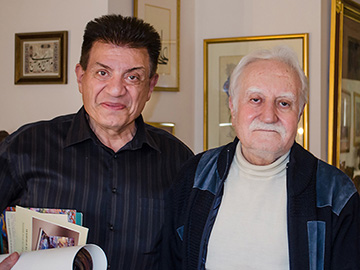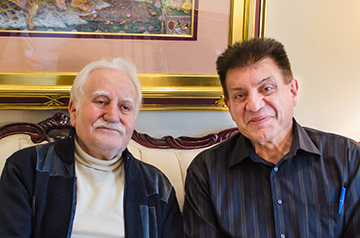
History of the miniature painting is well known. Many nations starting from Mongols, Chinese, Indians, all the way to Ottoman Empire and of course Persian empire expressed their cultures with many style of painting which evolved with time, artists, rulers of the land and stories to tell. Many art historians already explored these topics. Prior to Islamic influence, these artists express their cultures and illustrated the stories and poems through miniature painting with figures of men and women. Influence of Islamic religion forbid the artists of many nations including Persian culture to abundant drawing of human figure. The alternative solutions was painting flowers and decorative designs in walls of mosques and margin and cover of the books. Even hand writings This form of art was flourished and decorative tiles covered all the interiors and exteriors of the mosques and castles and palaces Artists were safe to express their art without getting punished for it. Even the carpets and draperies covered by these style of arts. Designs varied from one to other culture. You would notice these variations in comparing the masque in Isfahan and Istanbul or Jerusalem and etc.
The intricacy and complexity of design in Persian style painting and graphic designs are indisputable and by far more advanced than the other nations.

Drawing the human figures in painting start flourishing in later centuries with weakening the influence of Islam and regaining the original identity of the culture more or less as they could express freely the paintings on telling the stories or interpreting a poem.
In Persian culture this freedom was waiting to flourish. Especially in past 200 years artists like Master Behzad and many great masters before him created and evolved the Persian miniature to a different level. Changing in perspective of painting and introducing depth as third dimension was a major step to illustrate the realistic image of the painting this method was not new on the other side of the world and renounce painter like Rafael and Michael Anglo were painting using this method. but. Still something was missing! Although, it was close to real life figures and the viewer could observe the reality of the painting like a photo. It was and is beautiful but not something the viewer could let loose their imagination and go beyond that story, travel through the painting and see the beauty of the imagination of the artist. Be next to that deer or flower or the breathtaking nature.

Yes resonance artists went that route of realism. And produced master pieces but couldn’t pass the boarder of reality and imagination. In some paintings of Michelangelo this boarder was crossed.
This was changed when master Farshchian created this imaginary world beyond this world with exceptional vision He told us the known stories and tales with vibrant and complicated colors. His path of lines never stops and keep going as long as your eyes on the painting. This dynamic lines presents motion and never gets stagnant. Complicated entangled figures nothing short of amazement to bring. At the same time delivers the story much deeper than any story teller did.
I start following his style when I met him in art competition in city of Ramsar (city on the shore of Caspian sea) when I was 14.He was the judge of competition He was working on a painting it was amazing to just watch his hand with brush, how skillful with no hesitation and lines was making magic. It did not kick in right away. I was too young to realize it deeply. Since then I followed his style and never got altered to any other way. He guided me in many ways technically and spiritually through all these years. I was very fortunate and humbled to be under his guidance. Even I moved to USA, I never stopped following his guidance.
My technic of miniature is deviated from master Farshchian to the fact that I raised the characters out of the canvas and made them 3-Dimensional. This technic is midway between making sculpture and painting. It has its own technical challenges. It requires to master controlling the thick paint without losing smooth flow of the lines similar to using the thin paint and brush. It is not advised to overdo the character to be all 3 dimensional, but harmonize it to live side by side of 2 dimensional characters without interrupting the flow of the lines. The longevity of the 3d paints is a major concern. Care needs to be taken to make sure paints last long time without cracking or chipping or Separating from canvas. I developed special technic and material to do just that. I could never be master Farshchian just trying to follow his path.
Peace and happiness to all,
Andrew